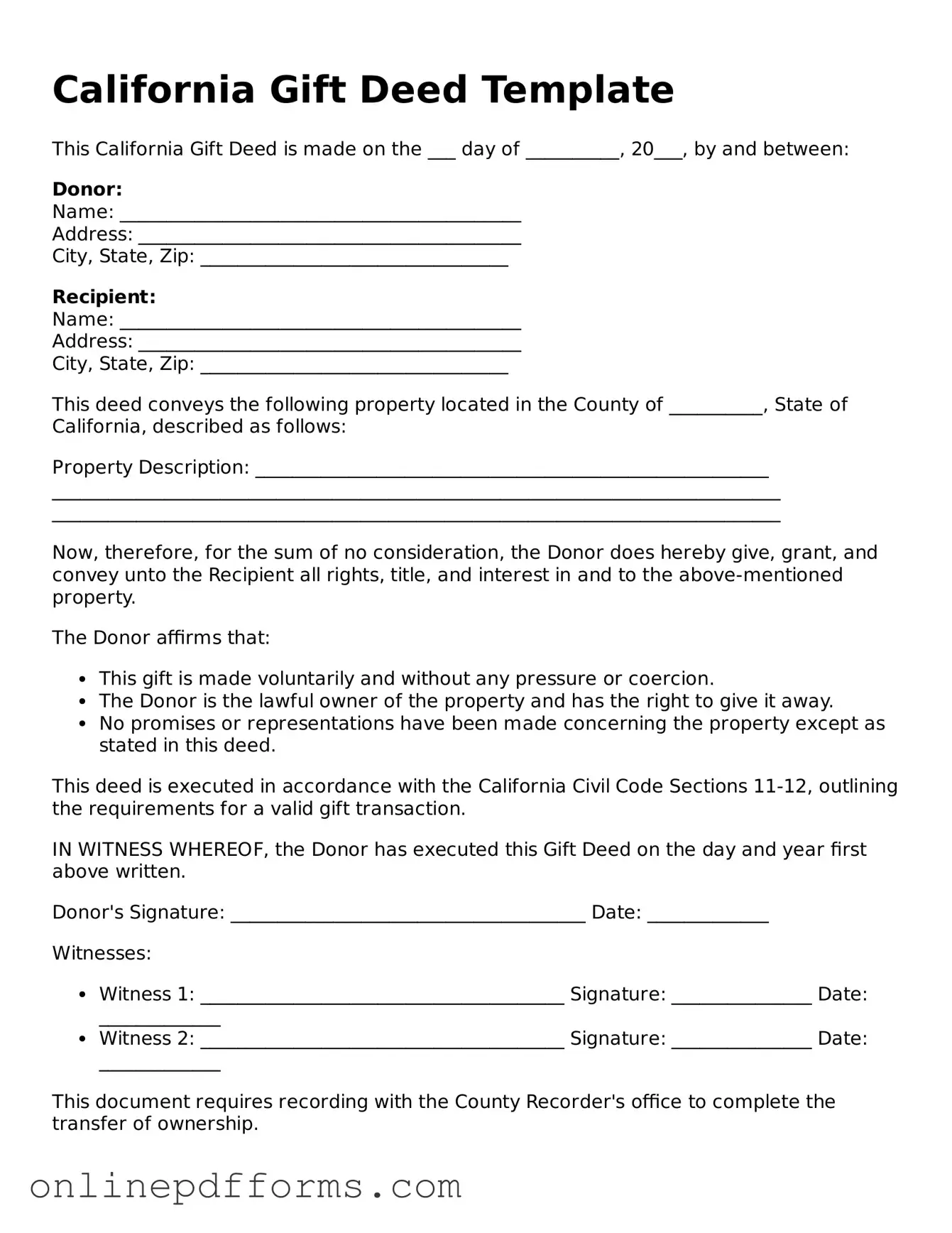The California Gift Deed is similar to a Quitclaim Deed. Both documents transfer ownership of property, but the Quitclaim Deed does so without any guarantees. When a person uses a Quitclaim Deed, they are essentially relinquishing any claim they may have to the property. This means that the recipient receives whatever interest the grantor had, if any. In contrast, the Gift Deed explicitly states that the transfer is a gift, and it may include certain assurances about the property’s title. While both documents serve to convey property rights, the Quitclaim Deed does so with less certainty regarding the property’s status.
Another document comparable to the Gift Deed is the Warranty Deed. A Warranty Deed provides a stronger guarantee of ownership than both the Gift Deed and Quitclaim Deed. When a property owner uses a Warranty Deed, they assure the buyer that they hold clear title to the property and have the right to sell it. This means that if any issues arise regarding the title, the grantor is responsible for resolving them. Unlike the Gift Deed, which is used for transferring property without consideration, a Warranty Deed typically involves a sale or exchange of value.
The California Gift Deed also shares similarities with a Bargain and Sale Deed. This type of deed transfers property ownership but does not provide warranties against defects in the title. While it implies that the grantor has an interest in the property, it does not guarantee that the title is free of claims. Like the Gift Deed, a Bargain and Sale Deed can be used in situations where the transfer is made without monetary compensation. However, the key difference lies in the implications of ownership rights and the level of assurance provided to the grantee.
A fourth document that resembles the Gift Deed is a Trust Deed. While a Trust Deed is primarily used in real estate financing, it also involves the transfer of property rights. In this case, the property is transferred to a trustee who holds it for the benefit of the borrower. Although the purpose of a Trust Deed is different, both documents involve a transfer of property and can be executed without monetary exchange. The main distinction is that a Trust Deed establishes a fiduciary relationship, whereas a Gift Deed simply conveys ownership as a gift.
Understanding the various forms of property transfer, including the pdftemplates.info/texas-vehicle-purchase-agreement-form, is essential for ensuring legal clarity and protecting the interests of both parties involved in a transaction.
Finally, the Gift Deed is akin to a Deed of Gift. This document is specifically designed for the transfer of property as a gift, similar to the Gift Deed. The Deed of Gift typically includes a description of the property and the intent of the grantor to make a gift. While both documents serve the same primary purpose, the Deed of Gift may be more commonly used in certain jurisdictions or contexts. Both documents require the grantor's intent to gift the property without expectation of return, emphasizing the voluntary nature of the transfer.
